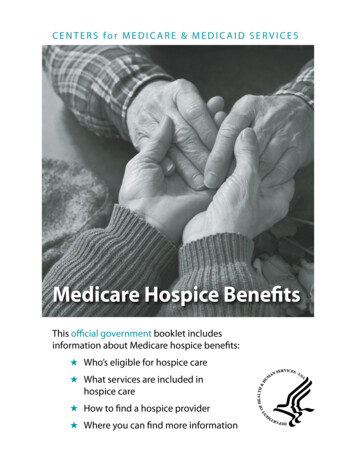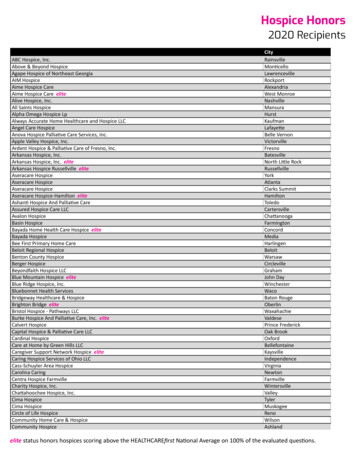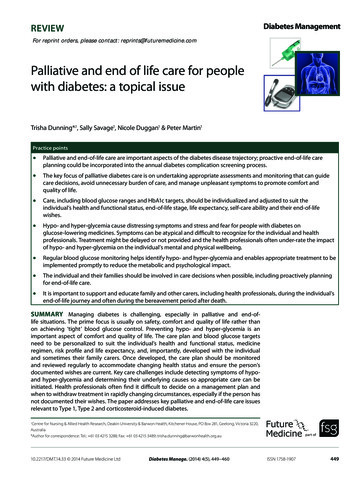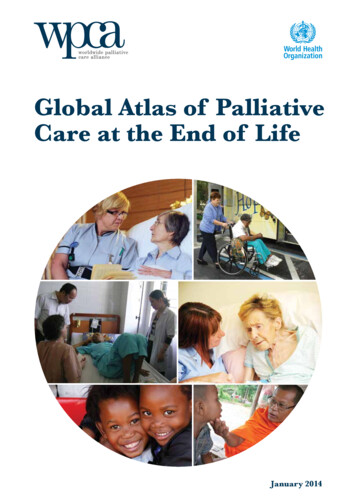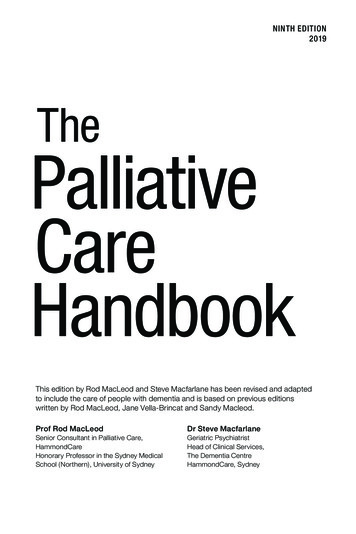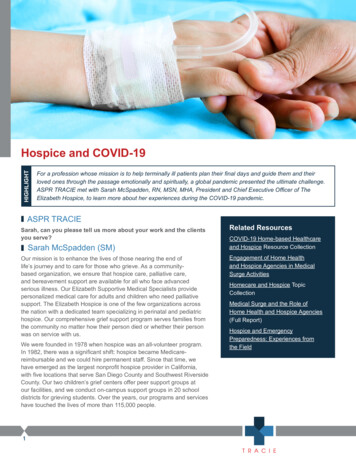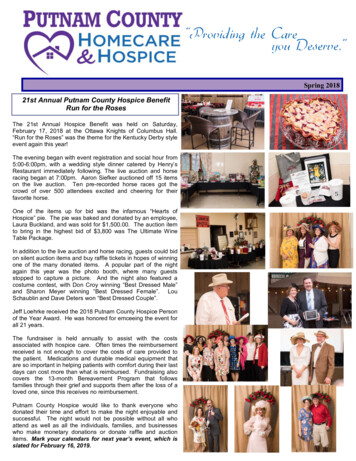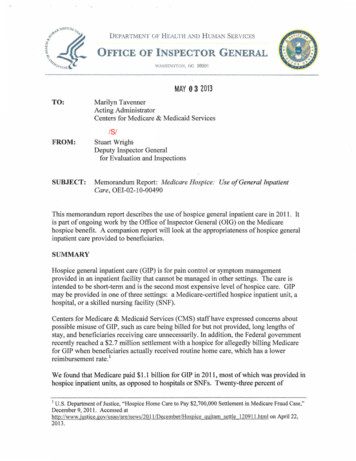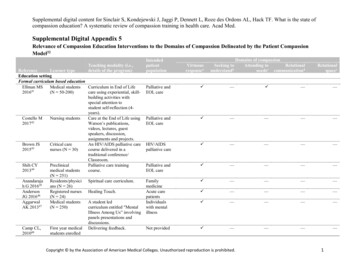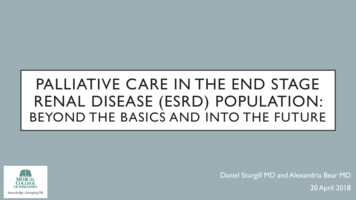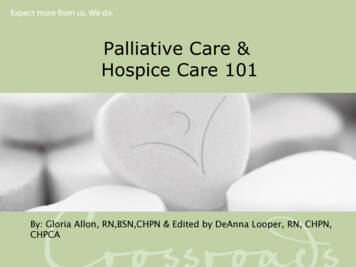
Transcription
Palliative Care &Hospice Care 101By: Gloria Allon, RN,BSN,CHPN & Edited by DeAnna Looper, RN, CHPN,CHPCA
Expect more from us. We do.“If we are not aware of death, we arenot mindful of our living”,Dr. Virginia SenoEducator in end of life communication
Expect more from us. We do.OBJECTIVES Define principals of palliative care. Describe the palliative care paradigm. Identify the role of nurses in assessment andtreatment of symptoms related to theterminal diagnosis. Identify common symptoms that are palliatedat end of life. Distinguish the role of nursing in promotingPalliative care.
Expect more from us. We do.Palliative care is “comfort care”.
Expect more from us. We do.PALLIATIVE CARE vs. HOSPICE CARE STILL RECEIVINGTREATMENT TREATMENT FAILEDTERMINAL ANY STAGE INDISEASE PROCESS FINAL STAGE OF LIFE COMFORT CARE IMPROVED QUALITYOF LIFE COMFORT CAREIMPROVED QUALITYOF LIFE
Expect more from us. We do.Commonly Asked Questions Where doesHospice Caretake place? What is theHospiceMedicarebenefit? Does thePatient have tohave a DNR ?
Expect more from us. We do.Levels of Hospice Care Routine care- can occur anywhere Respite care- for caregiver relief-maximum of5 day period. Continuous Care- for symptoms requiringextensive intervention. General Inpatient (GIP) must occur incontracted LTC or hospital for symptoms thatcannot be managed in the home setting.
Expect more from us. We do.Referral Process Anyone can make a referralconsents can be signed and or aneducational, informative discussion Must have a Doctor’s order to admit thepatient. Can have the admission RN do a chartevaluation. Provide face sheet and H&P
Expect more from us. We do.BETTER QUALITY OF LIFEEARLY REFERRAL TOHOSPICE
Expect more from us. We do.Early Referral to Hospice Care Allow the Patient to focus on Living Promote a Pro-active approach to Life Transition of family members from PCG tospouse, child, sibling. Use of Medicare Benefit- Respite, GIP
Expect more from us. We do.PRE HOSPICE CRITERIA FORPALLIATIVE CARE-Clinical Indicators Frequent trips to the E.D. or the hospital Frequent Infections Weight Loss Changes in intake Frequent medication changes Falls
Expect more from us. We do.Clinical Indicators -continued Changes in mental status Frequent skin breakdown Labile blood glucose readings Frequent IV sticks for lab orders Pain Issues Shortness of BreathPatient verbalizes desire to minimizetreatments, trips to the ER.
Expect more from us. We do.Principles of Palliative/Hospice Care Patient and Family are seen as 1 unit Patient-centered and Patient driven Plan ofCare Holistic Approach Interdisciplinary Approach All symptoms palliated to promote comfort
Expect more from us. We do.Conditions treated while onHospice Pneumonia Urinary tractinfections Fractures Upper Respiratoryinfections Can the patientgo to theHospital? Can a patientwork while onHospice?
Expect more from us. We do.Transitioning from Hospital toHospice Care Curative to palliative Symptom Management
Expect more from us. We do.Clinical Indicators for Hospice Frequent trips to the E.D. or the hospital Frequent Urinary Tract Infections Frequent Respiratory infections Weight Loss Changes in intake Frequent medication changes Falls
Expect more from us. We do.Symptoms Palliated at the Endof NAGITATIONCONGESTION
Expect more from us. We do.Pain ManagementWHO LADDERFLACC SCALE
Expect more from us. We do.EVERY PATIENT ON NARCOTICSSHOULD BE ON A BOWELREGIME!!
Expect more from us. We do.
Expect more from us. We do.Assess the patient and familiesdesires
Expect more from us. We do.
Expect more from us. We do.“ when you control pain andother symptoms, people notonly feel better, they livelonger.”Dr. Sean Morrison,President of American Academy ofHospice and Palliative Medicine
Expect more from us. We do.Palliative/Hospice CareOption Provide facts Provide literature Hospice and palliative care website Hope remainsNHPA
Expect more from us. We do.Questions ?
Expect more from us. We do.References NHPCO Website www.nhpco.org. World Health Organization. www.who.int/en/ FLACC Behavioral Pain Assessment 96/tools/flacc.pdf.
only feel better, they live longer.” Dr. Sean Morrison, President of American Academy of Hospice and Palliative Medicine . Expect more from us. We do. Palliative/Hospice Care Option Provide facts Provide literature Hospice and palliative ca

